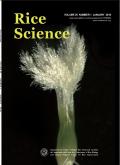Leucine-Rich Repeat Protein Family Regulates Stress Tolerance and Development in Plants
IF 5.6
2区 农林科学
Q1 AGRONOMY
引用次数: 0
Abstract
The leucine-rich repeat (LRR) protein family is involved in a variety of fundamental metabolic and signaling processes in plants, including growth and defense responses. LRR proteins can be divided into two categories: those containing LRR domains along with other structural elements, which are further subdivided into five groups, LRR receptor-like kinases, LRR receptor-like proteins, nucleotide-binding site LRR proteins, LRR-extensin proteins, and polygalacturonase-inhibiting proteins, and those containing only LRR domains. Functionally, various LRR proteins are primarily involved in plant development and responses to environmental stress. Notably, the LRR protein family plays a central role in signal transduction pathways related to stress adaptation. In this review, we classify and analyze the functions of LRR proteins in plants. While extensive research has been conducted on the roles of LRR proteins in disease resistance signaling, these proteins also play important roles in abiotic stress responses. This review highlights recent advances in understanding how LRR proteins mediate responses to biotic and abiotic stresses. Building upon these insights, further exploration of the roles of LRR proteins in abiotic stress resistance may aid efforts to develop rice varieties with enhanced stress and disease tolerance.
富含亮氨酸的重复蛋白家族调控植物的抗逆性和发育
富亮氨酸重复序列(leucine-rich repeat, LRR)蛋白家族参与植物的多种基本代谢和信号传导过程,包括生长和防御反应。LRR蛋白可分为含有LRR结构域及其他结构元件的两类,再细分为LRR受体样激酶、LRR受体样蛋白、核苷酸结合位点LRR蛋白、LRR延伸蛋白、聚半乳糖醛酸酶抑制蛋白和仅含有LRR结构域的LRR蛋白五类。在功能上,多种LRR蛋白主要参与植物的发育和对环境胁迫的反应。值得注意的是,LRR蛋白家族在与应激适应相关的信号转导途径中起着核心作用。本文对植物中LRR蛋白的功能进行了分类和分析。虽然对LRR蛋白在抗病信号中的作用进行了广泛的研究,但这些蛋白在非生物应激反应中也起着重要作用。本文综述了LRR蛋白如何介导生物和非生物应激反应的最新进展。在这些见解的基础上,进一步探索LRR蛋白在非生物抗逆性中的作用可能有助于开发具有更强抗逆性和抗病性的水稻品种。
本文章由计算机程序翻译,如有差异,请以英文原文为准。
求助全文
约1分钟内获得全文
求助全文
来源期刊

Rice Science
Agricultural and Biological Sciences-Agronomy and Crop Science
CiteScore
8.90
自引率
6.20%
发文量
55
审稿时长
40 weeks
期刊介绍:
Rice Science is an international research journal sponsored by China National Rice Research Institute. It publishes original research papers, review articles, as well as short communications on all aspects of rice sciences in English language. Some of the topics that may be included in each issue are: breeding and genetics, biotechnology, germplasm resources, crop management, pest management, physiology, soil and fertilizer management, ecology, cereal chemistry and post-harvest processing.
 求助内容:
求助内容: 应助结果提醒方式:
应助结果提醒方式:


